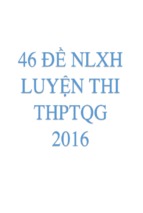Education and Research
2011–2016
A development plan
Reports of the Ministry of Education and Culture, Finland 2012:3
Suomen kansainvälinen yhteisjulkaiseminen
ISBN 978-952-263-096-4 (PDF)
ISSN-L 1799-0343
ISSN 1799-0351 (Online)
Helsinki 2012
Education and Research
2011–2016
A development plan
Reports of the Ministry of Education and Culture, Finland 2012:3
Opetus- ja kulttuuriministeriö • Koulutus- ja tiedepolitiikan osasto • 2012
Ministry of Education and Culture • Department for Education and Science Policy • 2012
Ministry of Education and Culture
Department for Education and Science Policy
P.O. Box 29
00023 Government, Finland
http://www.minedu.fi /OPM/Julkaisut/julkaisulistaus?lang=en
Layout: Teija Metsänperä, Ministry of Education and Culture, Finland
Cover image: Kirsty Pargeter, www.Rodeo.fi
Kopijyvä Oy, 2012
ISBN 978-952-263-122-0 (pbk)
ISBN 978-952-263-096-4 (PDF)
ISSN-L 1799-0343
ISSN 1799-0343 (Print)
ISSN 1799-0351 (Online)
Reports of the Ministry of Education and Culture, Finland 2012:3
Education and Research
2011–2016
In accordance with the Decree on the Development Plan for Education and University
Research (987/1998), the Government adopts a plan for the development of education
and university research within the administrative sector of the Ministry of Education and
Culture every four years for the year of adoption and the following five calendar years.
On 15th December 2011, the Government adopted the following development plan
for 2012–2016. The development plan is based on the objectives set for education and
science policy in the Programme of Prime Minister Jyrki Katainen’s Government.
Special development targets in the Plan are to alleviate poverty, inequality and
exclusion, to stabilise the public economy and to foster sustainable economic growth,
employment and competitiveness. The development plan will be implemented within the
scope determined in the Government decision on spending limits. The implementation
of the Plan will be evaluated in 2015.
Helsinki, 15th December 2011
Jukka Gustafsson
Minister of Education and Science
Contets
Preamble
6
Level of education and competencies
8
Level of education among the population will be raised
9
Action programme for equal opportunity in education
10
Equal access to education enhanced by municipal reform
11
Availability of competent workforce
12
Education supply targeted in response to labour market needs
13
Lifelong learning and guidance counselling
15
Immigrants’ participation in education and training
15
Stronger links between education and working life
16
Active citizenship
18
National languages strategy and enlarged language reserve
18
Information and communications technologies in education
18
Student welfare services to be improved
19
Better access to basic education in the arts
19
Early childhood education
20
Transfer of the administration of early childhood education
21
An Act on early childhood education
21
Pre-primary education for the whole age group
22
Basic education
24
Challenges in the operating environment to be taken into account
25
Reform of aims, allocation of lesson hours and curricula
26
Group sizes to be decreased
26
Quality criteria to support the operation of schools
26
A safe school day
27
Intensified and special support in basic education to be supported
27
Pupils’ emotional and social skills to be supported
28
Education in hospitals and the education of children in custody
28
Internationalisation as a strength
28
Upper secondary education and training
30
Educational guarantee as part of the social guarantee for young people
31
Service capacity to be developed
32
Flexible study tracks
33
Upper secondary schools
34
The financing base in upper secondary school education to be reformed
35
Objectives, allocation of lesson hours and curricula
35
Development of the matriculation examination
36
Vocational education and training
38
The system of vocational qualifications
39
Quality control in vocational education and training
40
Financing to give more incentive and steering to be harmonised
40
Internationalisation to be promoted
Higher education institutions and research
41
42
Structural development to be expedited
43
Quality education expedites entry into the labour market
45
Quality research and innovation make for competitiveness and impact
46
Researcher competencies and the promotion of researcher training and research careers
47
Stronger research infrastructures
48
Information in the public domain and the National Digital Library
48
Strong internationalisation safeguards quality
49
Adult education and training
52
Aims high in adult education and training
53
Better opportunities for adults in education and training
54
Competence-based qualifications to be developed
54
Adult higher education for upgrading and updating competencies
55
The development of a network of liberal adult education institutions
56
Educational evaluation and foresight
58
A national education evaluation centre
59
Quantitative and qualitative foresight to be coordinated
59
Teachers and other personnel
60
Student financial aid
62
Level of student financial aid
63
Upper secondary education and student financial aid
64
Higher education and student financial aid
65
Student financial aid granted for studies abroad
66
Appeals against student financial aid decisions
66
Support to school travel
67
Appendices
68
Appendix 1. Targets for education supply in 2016
68
Appendix 2. Targets for the supply of Swedish-language education in 2016
74
Preamble
The goal for the Government is to make Finland
the most competent country in the world by 2020.
The aim is that Finland will be placed among the
OECD top countries in major comparisons of
young people’s and adults’ learning outcomes, in
the number of school dropouts and in the relative
number of higher education graduates among young
and older adults. Measures will be taken to reduce
inheritance of education and to minimise gender
differences in learning outcomes, participation in
education and in the completion of studies.
Equal opportunity in education is the
underpinning of Finnish welfare. For educational
equality to be realised, it is imperative that
everyone gains a solid basis for learning already
in early childhood and in basic education and
that pupils and students with special needs and at
risk of exclusion have access to a diverse range of
supportive action. Measures must also be taken to
alleviate differences and heredity in post-compulsory
education. The participation of underrepresented
population groups requires special supportive
measures.
As recorded in the Government Programme, a
public economy that rests on a solid and healthy
foundation guarantees sustainable welfare. For the
public economy to be sustainable, it is necessary
that as many working-age people as possible are
employed and that the state debt takes a downward
turn. The means by which education and research
policy can contribute to the stabilisation of the
economy include measures designed to lengthen
work careers and improve the structures and
efficiency of the education system. Additional
investments will be made in research infrastructures
with a view to improving the prerequisites of growth.
A primary aim for the Government is to enhance
the competitiveness of Finnish knowledge and
competence. As the working-age population keeps
decreasing and the young age groups getting smaller,
the challenge is to ensure a high level of competence
and sufficient workforce by fields and regions.
Measures will be taken to update the content
of education and training and to enhance the
quality, efficiency and impact of the operations of
educational institutions. The decreasing age groups
make it possible to cut the provision of education
in a controlled way. Research standards will be
raised and measures will be taken to secure research
prerequisites.
Education policy is built on the lifelong learning
principle. Learning skills start developing early
in pre-primary and basic education, and input
into these will prevent exclusion at a later stage.
In a constantly changing society, favourable
development of learning skills is of primary
importance.
Lifelong learning policy entails that transitions
from one level to another and from education to the
labour market are as flexible as possible. Learning
does not end with a degree or qualification gained
in youth but continues throughout adult life. In all
education and training, attention will be paid to the
recognition of prior learning so that knowledge and
skills gained earlier within and outside the education
system can be counted towards a qualification as
fully as possible. An adult education and training
system comprising all the levels of education
creates a basis for responding to the competence
requirements in working life and for offering highquality services for self-improvement, for instance, in
liberal adult education.
7
L evel of education and competencies
Level of education among
the population will be raised
The aim for the Government is to make Finland
the most competent nation in the world by 2020.
Although Finns are generally considered a welleducated nation, this is not true in all respects. At
present, over 30 per cent of young adults have a
higher education degree and some 85 per cent a
post-compulsory qualification.
In the 1990s Finland carried out a reform creating
a system of polytechnics. The vocational college level
was gradually removed from the education structure.
If the Finns’ level of education is examined in a
frame of reference comprising all higher education
in the international classification, the level seemingly
even falls, which is due to the large proportion
of vocational college qualifications in the over-35
age group. Measured by the level of education in
2009, Finns in the 25–64 age bracket were placed
7th among the OECD countries (ISCED A and
B), and in the 25-to-34 age bracket only 18th. In
1991 young Finns were at the top in the OECD
comparison of the relative number of people with
higher education qualifications1. In 2001 Finland
was placed 6th and in 2009 18th. The OECD also
calculates the average rise in the level of education.
In the period 1999–2009, the rise among the
Finnish graduate population averaged 1.8 per cent
a year. This figure puts Finland at place 25 among
the OECD countries, which means that in most
countries the level of education was rising more
rapidly than in Finland.
In the EU growth strategy (EU 2020), Finland
commits itself to developing key sectors in society
and the economy in order to strengthen Finnish
and European competitiveness, improve welfare and
safeguard a sustainable public economy. Education and
science policy plays an important part in the Strategy.
In its draft national programme, Finland commits
itself to raising young people’s level of education and
reducing the proportion of early school-leavers. In the
strategy, Finland sets a concrete aim to raise the share
of 30-to-34-year olds who have higher education
diplomas to at least 42 per cent. According to the
policy line recorded in the Government Programme,
by 2020 over 90 per cent of the 20-to-24-year-olds will
have a post-compulsory qualification.
People with higher education2 qualifications in different age groups and the ranking in the OECD comparison, 2009
Higher education
graduates, %
Ranking in OECD
comparison
World top
%
25-to-34-year-olds
39
18
63 (Korea)
25-to-64-year-olds
37
7
50 (Canada)
1 As regards countries for which this data was available. The higher education level
comprises vocational colleges, polytechnics and universities.
2 Comprising vocational colleges, polytechnics and universities.
9
1. Objectives regarding the level of education:
The aims set for the education supply and
other measures raising the level of education
presented below are estimated to bring about
the following results.
2009
2020
Percentage of people with post-compulsory qualifications
25-to-64-year-olds
79,5
88
30-year-olds
85,7
94
Percentage of people with vocational or higher
education qualifications
25-to-64-year-olds
30-year-olds
73,9
84
76
88
Percentage of higher education graduates
25-to-64-year-olds
22,3
30
30-year-olds
39,2
42
Percentage people with licentiate or doctoral degrees
25-to-64-year-olds
30-year-olds
1
1,5
0,6
1,1
Action programme for equal
opportunity in education
Equal opportunity in education is realised when
all, whatever their background, have the possibility
to pursue education without their background
predetermining participation or learning outcomes.
Educational differentiation begins at an early age.
At the primary stage already, there begin to be signs
of correlation between a pupil’s background and
learning outcome. Many national and international
studies have shown that children of families in the
upper socio-economic brackets achieve better results
in learning than those belonging to lower socioeconomic brackets. In Finland, gender differences
in learning outcomes and participation in education
are also large in international terms. The findings
regarding Finnish students in the OECD PISA
comparisons warrant special attention to be paid to
improving boys’ reading literacy.
Although a concerted effort has been made to
ensure that all young people in Finland gain an
upper secondary qualification, a large number still
have only basic (compulsory) education. At present
10
some 17 per cent of the 25-year-olds do not have
post-compulsory qualifications. The corresponding
figure in the 30-year age group is slightly over 14
per cent. There are also gender differences in this: 90
per cent of women aged 30 have at least an uppersecondary diploma, whereas the corresponding figure
among men is 82 per cent.
Measures have long been taken to promote equal
opportunities in education. There is an extensive
provision of higher education, education leading to
qualifications is free of charge for students, students
can apply for student financial aid, and there are
higher education institutions in different parts of
the country. Information and communications
technologies and teaching methods applying ICT are
also increasingly used in realising regional equality
at all levels of education. Despite these measures,
surveys indicate that the social background still
influences participation in higher education and the
choice of field of education. In higher education
there are also gender differences: 48 per cent of
women have higher education degrees whereas
the figure is only 31 per cent among men. In a
similar vein, some fields of education are strongly
differentiated according to gender.
The Government will undertake comprehensive
action to even out gender differences in learning
outcomes, participation in education and
completion of studies and to minimize the effect of
the socio-economic background on participation in
education.
2. The Ministry of Education and Culture will
prepare an action programme to promote
equal opportunity in education. The aim is
to lower gender differences significantly in
competencies and education, to lessen the
effect of the socio-economic background on
participation in education, and to improve the
situation of disadvantaged groups in education.
The programme will enhance the possibilities
of every individual to learn and to develop
creativity, knowledge and different talents,
prevent gender segregation and promote
gender sensitivity in education. A research
project will be initiated in support of the action
programme. The Government will adopt the
action programme for equal opportunity in
education by the end of 2012.
3. Aims in measures reducing inequality
in education
Early childhood education
-- Measures will be taken to halve differences between
schools and regions, the gender effect and the
influence of the ethnic background on participation in
early childhood education by 2020. The long-term aim
is to do away with these differences altogether.
Comprehensive school
-- Measures will be taken to halve the differences
between schools and regions, the gender differences
and the effect of the social and ethnic background on
learning outcome by 2020. The long-term aim is to
do away with these differences altogether.
-- The differences between schools and the effect of
the social background must be among the smallest in
all the subject areas surveyed in PISA.
Upper secondary level
-- Measures will be taken to halve the gender and regional
differences and the effect of the social and ethnic
background on dropout in post-compulsory education
and training and on participation in general and vocational
upper secondary education by 2020. The long-term aim
is to do away with these differences altogether.
Higher education
-- Measures will be taken to halve the gender and
regional differences and the effect of the social
and ethnic background on participation in higher
education by 2020. The gender difference in
graduation in the young age groups will be reduced
by 2020 and halved by 2025. The long-term aim is to
do away with these differences altogether.
-- The effect of gender and the social and ethnic
background on participation in higher education must
be among the smallest in the OECD.
Adult education and training
-- Measures will be taken to halve the effect of
the social status and educational background on
participation in adult education and training by
2020. The long-term aim is to do away with these
differences altogether.
4. Changes in educational legislation,
administration and financing will always be
subjected to an impact analysis to assess
their effect on equal opportunity in education,
gender equality and inheritance of education.
5. Studies will be undertaken to find out how
and in what timetable the learning material
fees can be abolished in upper secondary
education.
Equal access to education
enhanced by municipal reform
According to its programme, the Government will
carry out a reform of the municipal structure in
the whole country. The aim of the Government’s
local government policy is to secure high-quality
and equitable customer-driven local services in
the whole country, create conditions conducive
to strengthening local economies, make urban
structures spatially more compact and consolidate
local self-government and local democracy.
The Government programme further records
an aim for Finnish education and cultural policy
to guarantee equal opportunities and the right to
culture, high-quality free education and prerequisites
for full citizenship for everyone, irrespective of their
origin, background or economic standing. Further,
differentiation between schools will be prevented.
The aim of the municipal reform is to bring
about a thriving municipal structure based on robust
municipalities. A strong municipality is made up of
natural commuter areas and is sufficiently large to
be able independently to manage basic services, with
the exception of specialised health care and social
welfare services. After the municipal reform, the
local authorities will be better placed to take care of
educational services and their development.
In keeping with the Government Programme,
the government transfer scheme will be revised as
part of the municipal reform. The scheme will be
streamlined, clarified and developed to be more
incentivising. The reform is projected to start in
2012. In this connection, the grounds for government
transfers for basic education will be reviewed with
11
a view to safeguarding access to equitable basic
education of uniform quality. The financing is
to give more weight to indicators describing the
operational environment in basic education, such as
the proportion of immigrants in the population, the
level of education among the adult population and
the unemployment rate.
6. The reforms concerning the financing of
basic education, upper secondary school
education and vocational education will be
scheduled to be compatible with the reform of
government transfers.
7. The enhancement of productivity in
educational services will be supported.
The calculation of the target productivity of
educational services will take account of costdevelopment and framework indicators, which
describe the development of quality and impact,
as well as the development of productivity.
Availability of competent workforce
The coming years will be marked by problems with
access to labour force owing to the demographic
change, changes in competence requirements and
the challenge as regards the sustainability of the
national economy. For society, the availability of
workforce will be a problem at least in two respects.
First of all, the shortage of workforce will complicate
the operation of growth business and undermine the
availability of welfare services in particular.
For some time now, Finland has based its
competitiveness on high-standard knowledge
and skills – on higher education and on strong
professional competence –, on the innovativeness
thus engendered and on rapid utilisation of
innovations in production. The problem with
the availability of workforce may evolve into a
bottleneck in the competence-driven competition
strategy. A worst-case scenario would be that
businesses encountering difficulties with access to
workforce increasingly outsource also their planning
and design abroad.
12
The availability problem also involves Finland’s
capacity for providing extensive welfare services.
Even if the social and health sector could improve its
productivity and develop new, less labour-intensive
care methods, the demand for workforce in the field
will grow substantially in the future. According to
the Government Institute for Economic Research,
the number of personnel tied in the health care and
social welfare services in 2025 will be around 1.24
times what it was in 2005. Counted in workforce, the
sector would be clearly larger than the manufacturing
industry, even if the ambitious aim set for productivity
were realised. According to a foresight conducted by
the National Board of Education, the demand for new
employees in the social and health care field will be
nearly 80,000 in the period 2008–2025.
Secondly, the demographic development will
worsen the care ratio significantly. The demographic
care ratio means the ratio of the population under 15
and over 64 to the working-age population. In 2010
there were 51.6 persons under or above working-age
per one hundred working-age persons. In 2020, this
figure will be nearly 70 and in 2030 clearly over 70.
Such an unfavourable development in the care ratio is
problematic in terms of balanced national economy.
Access to competent workforce can be improved
and the unfavourable development of the care ratio
can be compensated through measures improving
the efficiency of the education system and the
targeting of the education and training supply. In
terms of education policy, this means
-- Shortening the overall time spent in education
and training and the average age at the time of
qualification by means of shortening the time spent at
each level of education, expediting transition phases,
reducing unnecessary doubling in education and
enhancing the recognition of prior learning,
-- Improving the completion rate in education, and
-- Improving the matching of education supply and
labour demand.
Young and adult Finns are avid learners: 43 per cent
of Finns aged 20-to-29 and 15 per cent of those
aged 30-to-34 participate in education. Both figures
are clearly the highest in the OECD. This reflects
Finns’ aspiration to gain a good education and the
strong adult education system in Finland. On the
other hand, it also tells about the inefficiency of the
education system. The overall duration of education
and training is influenced by the flow in the
transition phases and the overall time spent in each
programme. These appear to take longer in Finland
than elsewhere in the world.
A lower average qualification age would bring
young people more rapidly into the labour market
and lengthens work careers. At the moment, the
median age of polytechnic graduates (excluding adult
education) is 25.1 and 27.3 for those graduating
with Master’s degrees.
8. With a view to lengthening work careers, the
aim is that the median age of new polytechnic
graduates will fall to 24.1 and the median age
of Master’s graduates to 26.3.
In 2009, 91.4 per cent of school-leavers continued
immediately in qualifying upper secondary
education. In addition to this, there were schoolleavers in voluntary additional basic education, in
education preparing for vocational training or in
other non-qualifying training. It is vital for efforts
to prevent exclusion and improve the availability of
workforce that all young people continue in postcompulsory education or training and that as many
as possible start in qualifying education and training
immediately after gaining school-leaving certificates.
9. The aim is that 95 per cent of school-leavers
continue directly in qualifying upper secondary
education and training and that all young people
continue in post-compulsory studies. The
admissions at the upper secondary level will be
reviewed to this effect.
Apart from general education, the future labour
market will require vocational or professional
qualifications gained in upper secondary or higher
education. At present, only 40.4 per cent of young
people start in qualifying education in the same
year as they pass the matriculation examination. In
practice, this means that the majority of matriculated
students have to wait for the following year’s
admissions. Some of them do not continue their
education at all. It is important for the efficient
operation of the education system that young people
are placed in education without delay after the
matriculation examination.
10. The admissions to higher education will be
reformed to promote more rapid transition to
further education. The aim for 2016 is that 50
per cent of matriculated students continue their
education the same year. The main education track
for matriculated students is higher education.
The rate of completion3 has been developing
favourably in most parts of the education system.
In the upper secondary school, the completion rate
is 87 per cent, in vocational education and training
71.3 per cent, and in polytechnic youth education
67.8 per cent as regards Bachelor’s degrees and 70.3
per cent as regards Master’s degrees4.
The improvement involves both accelerating studies
and putting the resources to more effective use.
11. The aim is to raise the completion rate in the
upper secondary school to 90 per cent, in initial
vocational education and training to 78 per cent,
and in higher education to 75 per cent.
The aims above, except point 10, are set for 2020.
Education supply targeted in
response to labour market needs
At present, the education supply in some fields
exceeds and in others fails to meet labour market
needs. Inadequate matching of education and the
3 Here completion rate means the proportion of those who complete their education /training
out of the whole exit, that is, compared to the aggregate of those with qualification and dropouts.
4 In regard of the Master’s degrees, the figure is from the previous academic year, 2006/2007,
because the degree reform has had a considerable effect on the completion rate.
13
labour market demand has an effect on not only
the functioning of the labour market, but also
the way young people find their place in working
life and how long they study. The targeting of
education supply is backed up by a wide range of
foresights conducted by the Government Institute
for Economic Research and the National Board of
Education, among others. The supply targets follow
the trends outlined in the foresights but have been
adjusted to some extent, because of
-- The desire to keep changes from the 2009 level
realistic and achievable
-- The aim to ensure prerequisites for high-quality education
-- The vision of a national economy based on solid
competence, Finland’s aims for the EU 2020 strategy
and other aims relating to the level of education.
In the present decade, the targeting of the education
supply will probably gain even more importance because
the rate of exit from the labour force will clearly exceed
the rate of entry. In some fields at least, the oversupply
will probably turn into a labour shortage.
The challenge will be to promote a balanced
development of employment in industrial
production and welfare services, among others.
In Finland, the labour market is heading towards
a situation in which the annual size of the age
groups entering the labour market will be 6,300
persons smaller on average than the predicted labour
needs. The targeting of the education supply must
simultaneously promote both competitiveness and
equitable availability of welfare services.
The largest pressures for decreases in education
supply exist in culture and in tourism, catering and
domestic services. The need for education in culture
is 3,000 entrants smaller than current intakes.
The biggest single reduction needs are in initial
craft and design training and in initial vocational
and polytechnic education in information and
communication. The need for entrants in tourism,
catering and domestic services is 1,300 smaller than
the current intakes; the cuts will be mostly made
in initial vocational and polytechnic education in
tourism and in initial vocational training in hotel
and catering.
The largest needs for increases exist in initial
vocational automotive technology and logistics
training and in the health and social services sector.
12. Education supply targets for 2016 by fields of education:
Entrants
2009
Humanities and education
Culture
Social sciences, business and administration
Natural sciences
Technology, communications and transport
Natural resources and the environment
Social services, health and sports
Tourism, catering and domestic services
5 774
Entrant targets
for 2016
5 830
4 740
7 707
4 745
3 670
16 126
15 960
12 300
6 304
5 310
3 450
32 997
32 190
24 430
4 042
3 770
2 700
17 324
18 590
15 340
8 361
7 305
5 500
* The number of qualifications which the target number of entrants for 2016 is estimated to produce.
The targets for each field and level of education are given in Appendix 1.
14
Estimated number
of qualifications
awarded*
Lifelong learning and
guidance counselling
Lifelong learning means learning throughout the
lifespan and in all walks of life. For the principle
of lifelong learning to be realised, it is vital that
knowledge and competencies are made visible
and knowledge and skills are valued to the full
wherever, whenever and however they have been
acquired. When done correctly, the identification
and recognition of prior learning will make for a
well-working education and qualification system
and improve the motivation and progress of the
individual in education and in working life.
Educational legislation already provides for the
recognition of non-formal learning. The practices
and effect of recognition vary, however. The
assessment of learning is often felt to be difficult
and laborious, or the recognition has no effect on
studies. Recognising knowledge acquired in different
ways also entails competence-based definition of
qualification requirements. It is only when the
target learning is sufficiently well defined that the
individual’s learning can be assessed in relation to it.
Educational institutions and various other
operators provide guidance counselling in support of
studies and the choice of education and career and
compile information about different types of work
and education. There are, however, development
needs and blind spots in the provision of guidance
counselling. The competence of guidance counsellors
also entails constant development.
13. Educational legislation, guidance
counselling and financing will be used to
promote the identification and recognition
of prior non-formal learning in all education.
Measures will be taken to promote
competence-based definition of degrees and
qualifications.
14. Criteria will be defined for guidance
counselling in basic education, in general
upper secondary education and in vocational
education and training for adoption in the
autumn term of 2014. In vocational education
and training, the criteria will be adopted in
connection with the implementation of the
quality strategy.
15. Electronic information, guidance and
counselling services will be developed as part
of the learner’s web services included in
the SADe programme (Programme expediting
electronic transactions and democracy).
16. The higher education institutions will raise
the standard of instruction and guidance and
improve the graduation rates at all degree levels.
17. The initial education of guidance
counsellors will be developed in response
to the growing demands of the profession.
Similarly, measures will be taken to improve
opportunities for persons working within
guidance in different administrative sectors
and in working life to participate in further and
continuing professional education.
18. Measures will be taken to develop the
implementation of the one-stop principle in
all guidance services with a view to making
full use of the competence and expertise of
different administrative sectors.
19. The centres for economic development,
transport and the environment will be given a
stronger role in the development of regional
guidance cooperation.
Immigrants’ participation
in education and training
Fewer young immigrants go on to study in the upper
secondary school than the mainstream population
and therefore they are also underrepresented
in higher education. One crucial factor is their
language proficiency, which they often feel to be
deficient. The provision of additional voluntary
basic education has not given sufficient support
to them in language development. The aim is that
immigrants and people with immigrant backgrounds
15
participate in education in the same ratio as the
mainstream population.
Similarly few young people with immigrant
backgrounds take up vocational education and
training and the dropout rate among them is higher.
Young immigrants rarely participate in education
preparing for vocational training, which would help
entry into education or training. At present, this
option is mainly used by adults.
Institutes of liberal adult education arrange
integration education, which responds well to
immigrants’ educational needs. The demand has
been constantly growing. The voucher scheme for
immigrants’ participation in liberal adult education
has proved to work well and to motivate immigrants
to participate in education.
The new Act on the Integration of Immigrants
came into force on 1 September 2011. During
the spring of 2012, the Government will issue a
resolution on a cross-sectorally prepared four-year
integration programme. The programme will set out
the aims for the development of integration and the
measures needed. The ”Participative Integration in
Finland” project will continue up to 2013.
20. With a view to improving immigrants’
capacity to study in the upper secondary
school, provisions concerning preparatory
education for immigrants will be included in
legislation. The duration of the education is one
year. The implementation of the reform will be
start at the beginning of 2014.
21. The level of language instruction given
in immigrants’ integration education will
be improved and enlarged to provide real
capabilities for immigrants to participate in
education preparing for vocational education
and training and for polytechnic education.
Special attention will be paid to young
immigrants who come to Finland close to
the end of compulsory schooling age or after
it. The planning and implementation of the
integration education will take the immigrant’s
whole family into account. The status of the
Swedish language will be guaranteed in
16
integration education. Education preparing
immigrants for vocational education and
training will stress the language proficiency
required for participation. Preparatory education
will also be targeted to young immigrants.
22. Obstacles to immigrants’ higher education
will be removed through the development of
guidance counselling, student selection and
other support action. The higher education
institutions will carry on the development of
language instruction, practical training and
other support geared to international students.
The higher education institutions will offer
curricular study modules, associated language
instruction and other continuing education for
self-motivated studies and for commissioned
labour market training.
23. Institutes of liberal adult education will
develop and step up immigrants’ language
instruction. Measures will be taken to develop
and increase integration education provided
by adult education centres and folk high
schools and education provided by adult
upper secondary schools, adult lines in upper
secondary schools and study centres.
24. One focus in the development of guidance
counsellors’ education will be the special
issues relating to young immigrants.
Stronger links between education
and working life
During the last few years of basic education, pupils
have work familiarisation periods in support of their
education and career choices. On the whole, the
placements at the workplace are one to two weeks.
However, cooperation between basic education
providers and employers has been minimal. Only
20 per cent of comprehensive schools and even
fewer upper secondary schools (4%) cooperate with
business and industry. The cooperation is often
sporadic and not adequately linked to studies and
learning. This means that pupils’ and students’
opportunities to familiarise themselves with working
life vary according to the activity of the school.
Cooperation with employers and working life
is an essential part of vocational education and
training. Education providers cooperate actively
with the world of work in the development and
provision of education. On-the-job learning is a
compulsory part of all vocational qualifications. All
students in initial vocational education and training
obtain basic information about working life and
entrepreneurship. On-the-job instructors have an
important role in work-based learning, but there
is no systematic training provision for them. The
operative concepts in efforts to enhance the impact,
quality and matching of adult vocational education
and training are ’work-centred’, ’demand-driven’ and
’responsive’. Development services for employers are
an essential part of it.
In addition to the development of the
education system and a rise in completion rates,
it is necessary to increase flexibility in education
and training in order to accommodate different
learners and different learning styles. This entails
more opportunities for work-based learning and
closer cooperation with third-sector operators who
recognise that their work environments are learning
environments contributing to curricular aims.
In higher education institutions, work placement
is included in degree requirements and students
often write theses that serve working life needs. At
present, the university administrative bodies have a
wider representation of external stakeholders than
before. Contacts with working life must be further
intensified to keep the education content up-to-date
and to give students a clearer picture of possible
work careers and better employment prospects.
During the upcom ing ESF period, models will
be prepared for school – work cooperation
suitable for use in upper secondary schools.
27. The qualification requirements in vocational
education and training will be revised to
enhance knowledge about the rules obtaining
in working life and about societal influence.
Improved contacts with working life will be
taken into account in the funding reform.
28. Measures will be taken to ensure sufficient
training of on-the-job instructors and access to
this training. Possibilities to create a permanent
funding model for the training will be explored.
Alternative ways to arrange on-the-job
instructors’ training will be developed.
The content of the training will be developed
nationally to serve extensively work-based
learning and on-the-job practice at different
educational levels, the evaluation of vocational
competence and the knowledge needs of each
on-the-job instructor.
25. Measures will be taken at all levels to
increase education on the rights and duties of
the citizen, the employee and the entrepreneur.
29. Measures will be taken to reinforce the
strategic significance of the development
services provided for employers in continuing
vocational education and training and demanddriven approaches in the implementation
of continuing vocational education and
training. Cooperation based on partnerships
between education providers, businesses
and public organisations will be developed
and strengthened. Work-based development
services supporting innovation will be
diversified. Measures will be taken to raise
awareness about development and service
cooperation with the world of work and to
enhance its quality and matching.
26. The revised core curricula for basic
education and upper secondary school
education will determine nationally uniform
aims for working life skills which can be
applied according to local circumstances.
30. Schools will provide more opportunities
for labour market organisations and operators
to present working life, their operations and
the branches of industry and occupations they
represent.
17
31. The contacts of higher education
institutions with the world of work will be
improved through the development of funding
criteria and models.
Active citizenship
Children’s and young people’s inclusion and
influence in matters concerning them promotes
growth into active citizens by developing knowledge
and skills for operating in a democratic, egalitarian
society working on the principle of sustainable
development.
According to recent studies, there are
shortcomings in vocational students’ knowledge
about society and channels of influence in society.
32. Educational institutions will develop
education for democracy. Instruction will
include more contents and procedures
which foster participation, influence and the
development of political and societal literacy.
Student associations will be established on a
permanent basis in all comprehensive schools
in 2014 by means of amendments to the Basic
Education Act and students will be empowered
to exert real influence through the associations.
33. Pupils, students and teachers will be
included in all development of education.
34. Non-governmental organisations and
other social movements will be provided more
opportunities to present their activities in
schools and other educational institutions.
National languages strategy and
enlarged language reserve
All sectors of society work in an international
operating environment which requires good
proficiency in a wide range of languages and good
knowledge of cultures. In view of this, language
learning in the comprehensive and upper secondary
schools has been overly focused on the English
language. Widening the language base entails greater
18
interest in learning other languages and cultures on
the part of students and a regionally comprehensive
provision of language instruction.
35. A national languages strategy will be
prepared under the leadership of the Prime
Minister during 2012.
36. The teaching methods in the instruction
of the national languages will be developed to
place more emphasis on communication skills.
The Ministry of Education and Culture will
undertake a programme to build up children’s
and young people’s diverse reading and writing
literacy.
37. During the current government period,
aims will be set and means of implementation
devised for diversifying the national language
reserves and knowledge of cultures.
Information and communications
technologies in education
Information and communications technology (ICT)
is an essential part of education, working life and
the operation of the whole society. The use of ICT
makes for more flexible and personalised learning
and renews instruction. Care will be taken in both
initial and continuing teacher education to make
sure that teachers are able to use ICT in education.
The purpose of the Act on public information
management (634/2011), which came into force
at the beginning of 2011, is to step up public
governance and improve public services and their
accessibility. The Act focuses on enhancing the
compatibility of the information systems in the
public administration, that is, in state and local
government.
38. Measures will be taken to improve the use
of ICT in education and to develop teachers’
and students’ ICT skills.
39. Measures will be taken to develop
information management and information
- Xem thêm -





















